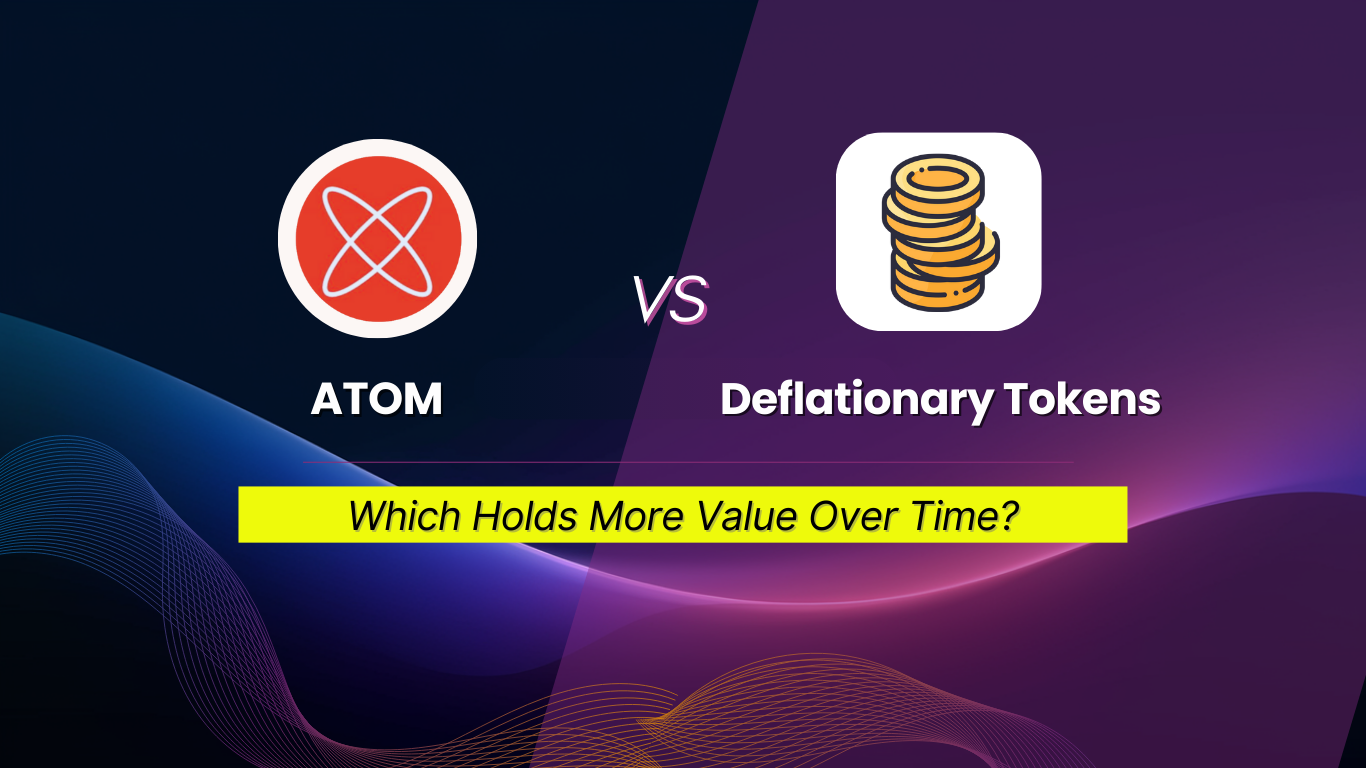From the Blogs
Learn how to grow your business with our expert advice.

ATOM vs. Deflationary Tokens: Which Holds More Value Over Time?
Introduction: Scarcity vs. Deflation—Which Strategy Wins?
The concept of scarcity has always been a fundamental driver of value. Whether it’s gold, rare art, or Bitcoin, people have long assigned worth to assets that are difficult to obtain. In the cryptocurrency market, two models attempt to capitalize on this idea—deflationary tokens and absolute scarcity tokens like ATOM XRPL.
Deflationary tokens follow a structured approach where supply is gradually reduced over time through burn mechanisms or token buybacks. This approach aims to make each remaining token more valuable as scarcity increases. Meanwhile, ATOM takes an entirely different path—instead of slowly reducing supply, it started with the rarest supply possible: just one token in existence.
So, which model holds more value in the long run? Is a deflationary crypto vs. scarcity crypto investment more profitable? In this blog, we’ll compare ATOM and deflationary tokens, analyze how each model affects price appreciation, and determine which one offers the best long-term value proposition.
Understanding Deflationary Tokens: How They Work
What Are Deflationary Tokens?
A deflationary token is designed to reduce its total supply over time. This is typically done through mechanisms like:
- Token burns – A portion of tokens is permanently removed from circulation.
- Buybacks – Tokens are repurchased by the project and destroyed.
- Auto-reduction mechanisms – Some tokens automatically reduce supply with every transaction.
The idea is simple: as supply shrinks, demand should increase, driving up the price. Many popular deflationary tokens operate on this principle, including:
✔ BNB (Binance Coin) – Binance burns BNB every quarter to reduce supply.
✔ SHIB (Shiba Inu) – Uses token burns to create artificial scarcity.
✔ LUNA Classic (LUNC) – Introduced a tax burn mechanism after its collapse to stabilize supply.
The Strengths of Deflationary Crypto Tokens
- Encourages holding – Since supply is reducing over time, long-term holders are incentivized to keep their tokens.
- Creates artificial scarcity – Even if a token starts with a large supply, burns can make it seem rarer.
- Deflationary mechanics can increase price – A decreasing supply should, in theory, push the price higher.
The Weaknesses of Deflationary Crypto Tokens
- Supply reduction does not always guarantee demand – If people are not interested in the token, burning it won’t make a difference.
- Market manipulation concerns – Some deflationary tokens use aggressive burn schedules to create short-term hype.
- Burning supply does not add utility – Unlike Bitcoin, which has real-world adoption, deflationary tokens rely on demand for their success.
How ATOM XRPL Differs from Deflationary Tokens
What Makes ATOM Unique?
While deflationary tokens reduce supply over time, ATOM started with the most extreme level of scarcity possible—just one token in existence. Instead of gradually shrinking supply, ATOM is already as rare as an asset can get.
Key differences between ATOM and deflationary tokens:
✔ ATOM has a fixed total supply of 1 – No new tokens will ever be created.
✔ Deflationary tokens decrease supply over time – ATOM does not require burns or buybacks.
✔ ATOM is purely market-driven – Its value is determined solely by its extreme exclusivity.
The Strengths of ATOM’s Scarcity Model
- Absolute rarity creates organic demand – People inherently want what is rare, giving ATOM a built-in value proposition.
- No manipulation or artificial scarcity – Deflationary tokens engineer scarcity by reducing supply over time, but ATOM’s rarity is permanent and immutable.
- Fractional ownership makes it accessible – Since ATOM is divisible into sub-atomic units (0.000001 ATOM), anyone can hold a portion of it.
The Weaknesses of ATOM’s Model
- Lack of traditional utility – Deflationary tokens often have staking rewards, governance models, or DeFi integration, while ATOM is purely a scarcity experiment.
- Market perception determines value – While deflationary tokens have supply-reduction schedules, ATOM’s value relies entirely on how much people are willing to pay for extreme rarity.
Deflationary Crypto vs. Scarcity Crypto: Key Comparisons
FeatureDeflationary TokensATOM XRPLSupply Model | Reduces over time (burns, buybacks) | Fixed at 1 token (absolute scarcity)
Scarcity Method | Gradually created through burning | Built-in, total supply of 1
Market Perception | Needs active burning to maintain demand | Purely demand-driven, rarity is permanent
Liquidity | Can be affected by burn schedules | Fully liquid (divisible into fractions)
Long-Term Value | Depends on demand sustaining over time | Based on extreme exclusivity
Which Holds More Long-Term Value?
1. Price Growth Potential
Deflationary tokens require ongoing demand to ensure that reducing supply results in price appreciation. If demand declines, burns become meaningless. ATOM, on the other hand, is already at its maximum level of scarcity, meaning that if demand increases, its price could rise exponentially.
2. Market Manipulation Risks
Deflationary tokens can sometimes artificially inflate their price through large-scale burns or supply-reduction events. This can create short-term hype, but once the burn slows down, prices often collapse. ATOM does not face this issue—its scarcity is authentic and unchangeable.
3. Liquidity and Accessibility
One concern with deflationary tokens is that as supply decreases, liquidity may suffer—fewer tokens in circulation can lead to higher price volatility. ATOM solves this problem by allowing fractional ownership, ensuring that anyone can own a part of the rarest asset in crypto history.
4. Stability and Security
Because ATOM exists on XRP Ledger (XRPL), it benefits from high-speed transactions and ultra-low fees, unlike many deflationary tokens built on Ethereum, which suffer from high gas fees. This makes trading and holding ATOM more efficient than dealing with deflationary tokens on expensive blockchains.
Where to Buy and Hold ATOM
If you want to own a fraction of ATOM, it is available on XRPL-based decentralized exchanges:
- First Ledger – Trade ATOM Here
- Sologenic – ATOM on Sologenic
- XMagnetic – Trade ATOM on XMagnetic
These platforms allow seamless trading of ATOM fractions, ensuring that anyone can participate in this scarcity experiment.
Conclusion: Which Model Wins?
Deflationary tokens are built around the idea of reducing supply over time, but this only works if continuous demand exists. Many deflationary projects struggle to sustain long-term value, as the success of the model depends on constant hype and adoption.
ATOM, by contrast, is the rarest crypto asset ever created. It does not need to burn supply—it already exists in its final form. Its extreme scarcity ensures that every fraction remains valuable, making it a pure test of digital exclusivity.
For investors looking at the ultimate store of digital scarcity, ATOM offers a stronger long-term value proposition than deflationary tokens that require active supply manipulation to retain worth.
